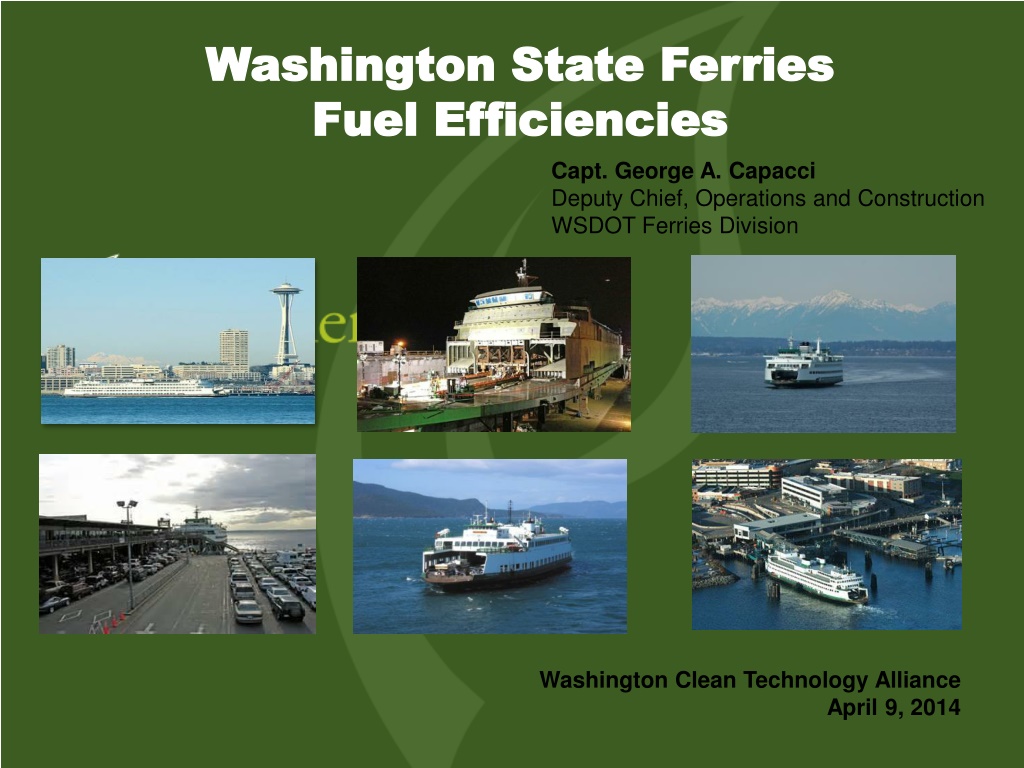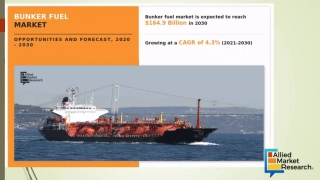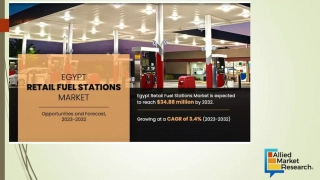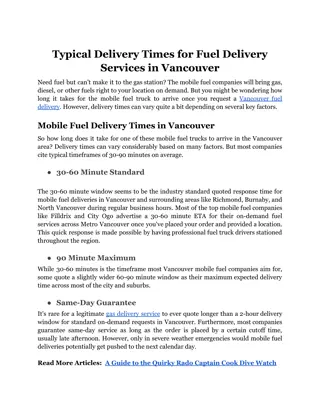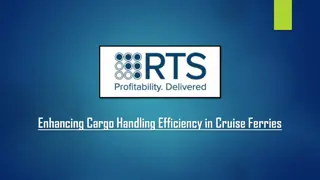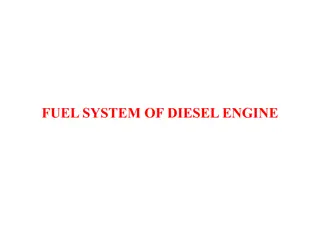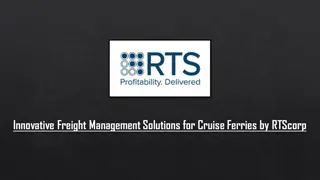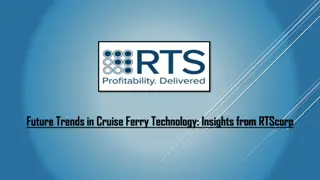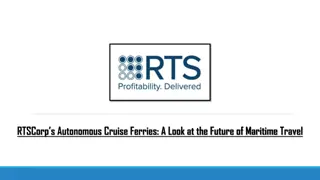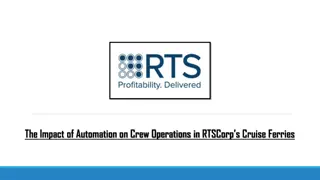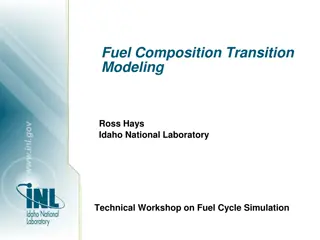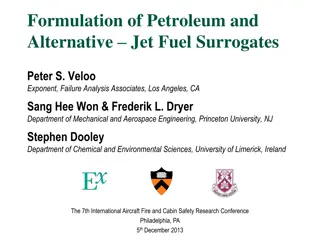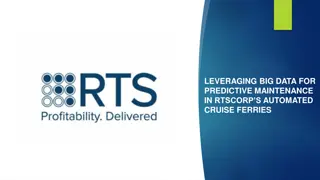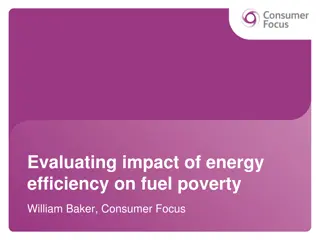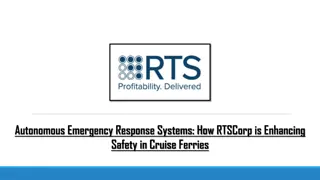Washington State Ferries Fuel Efficiency Initiatives
Washington State Ferries (WSF) is implementing various fuel efficiency measures to reduce fuel consumption, including propeller redesign, hull coatings, and operational changes. The importance of fuel efficiency is highlighted as fuel represents a significant portion of the operating budget. WSF has been recognized for its efforts in fuel conservation and is exploring the use of ultra-low sulfur diesel and biodiesel to further improve environmental sustainability.
Download Presentation

Please find below an Image/Link to download the presentation.
The content on the website is provided AS IS for your information and personal use only. It may not be sold, licensed, or shared on other websites without obtaining consent from the author. Download presentation by click this link. If you encounter any issues during the download, it is possible that the publisher has removed the file from their server.
E N D
Presentation Transcript
Washington State Ferries Washington State Ferries Fuel Efficiencies Fuel Efficiencies Capt. George A. Capacci Deputy Chief, Operations and Construction WSDOT Ferries Division Washington Clean Technology Alliance April 9, 2014
System overview More than 22 million riders per year 10 million vehicles carried per year Fleet of 22 auto-passenger ferries, 34 cars to 202 cars 20 terminals on 10 routes 450 departures per day 1800 employees Nine unions and 11 collective bargaining agreements 2
Existing Washington State ferry fleet Super Class Jumbo Mark II Issaquah Class Jumbo Class Hiyu Kwa-di Tabil Class Evergreen State 3
Importance of fuel efficiency WSF burns more than 17 million gallons of fuel annually Fuel represents 23 percent of FY13-15 operating budget (compared to 11 percent in FY00-01) 4
WSF current fuel efficiencies Propeller redesign/replacement Jumbo Mark II Hull coatings New cylinder and piston assemblies for EMD engines Operational changes: Schedule adjustments during off hours Pushing the berth SRPM adjustments Kwa-di Tabil class to operate in full feather mode Vessel trim variable vehicle loading Increase departure time from 90 to 150 seconds 5
Fuel consumption Fuel conservation 2012 - the American Association of State Highway and Transportation Officials recognized WSF with the President s Transportation Award for WSF s innovative work to save 180,000 gallons of fuel and more than $700,000 per year on the Edmonds/Kingston route. We are applying this same initiative to other routes in the system. Shore-based power Many of our vessels now plug into shore- based power to run the lights/heat during overnight tie-up. 6
Ultra-low sulfur and biodiesel Ultra-low sulfur diesel (ULSD) WSF began using ULSD in 2007 and helped prove that high sulfur fuels were not needed for engine lubrication. Biodiesel WSF conducted a pilot biodiesel fuel test in 2004 using B20. The pilot project experienced challenges due to excessive clogging in fuel purifiers and plugging of fuel filters during testing. WSF conducted additional testing of B20 in 2008. As of February 2013, all of WSF s 22 vessels use B5 biodiesel a blend of 5 percent biodiesel and 95 percent ultra-low sulfur diesel. 7
Hyak Hybrid Project WSF is proposing a combined power management and hybrid concept on the 144-car/2,000- passenger Hyak. The Hyak burns an average of 1.34 million gallons of fuel per year. Fuel savings will total about $21.5 million over the remaining life of the vessel. Estimated completion in 2016. 8
Liquid natural gas conversion WSF proposes retrofitting 6 Issaquah Class vessels to burn LNG fuel 9
Opportunities with LNG Economy: Moving from diesel to LNG could save 40-50% at today s pricing. Pollutant Reduction: WSF is the largest single source of carbon emissions in Washington state government and significant emissions reductions could be achieved with conversion. 10
Status of LNG project WSF has conducted nearly 4 years of analysis, evaluation and detailed studies on conversion of existing fleet to LNG. On Nov. 18, 2013, WSF submitted a formal Letter of Intent (LOI) to the U.S. Coast Guard forwarding Waterway Suitability Assessment (WSA). WSF is awaiting USCG approval of WSA followed by RFP for detailed design of LNG conversion. WSF is committed to LNG as a transitional fuel to save money and reduce emissions. 11
Contact Capt. George A. Capacci WSDOT Ferries, Deputy Chief, Operations and Construction 206-515-3414 CapaccG@wsdot.wa.gov For more information, please visit us on the Web: www.wsdot.wa.gov/ferries LNG: www.wsdot.wa.gov/ferries/environment/LNG Hyak: www.wsdot.wa.gov/projects/ferries/hyakpreservation 12
